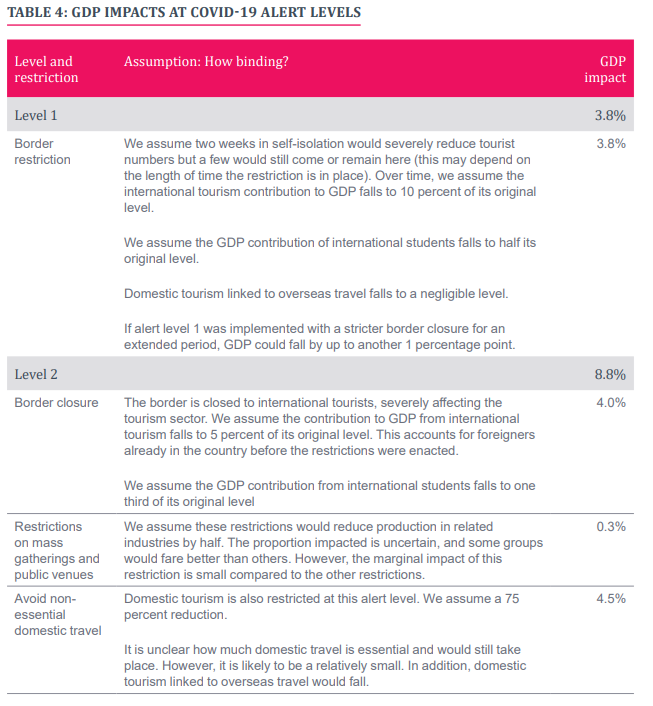A new Reserve Bank assessment of the economic impact of COVID-19 underlines the importance of getting New Zealanders moving again.
Economic impacts of COVID-19 containment measures forecasts an 8.8 per cent reduction in New Zealand’s GDP output under Level 2 – virtually all this reduction coming from a constrained tourism sector.
The border closure results in a 4.0 per cent reduction in total GDP, with international arrivals falling to a fraction of previous levels. Restrictions on mass gatherings and events shave another 0.3 per cent off GDP.
The Reserve Bank uses the current Level 2 guidelines, which allow for essential domestic travel only.
This would have the biggest economic impact, shaving 4.5 per cent from New Zealand’s GDP output.
Tourism Industry Aotearoa says it is essential that the guideline updates being issued today allow for safe domestic travel.
“This Reserve Bank report highlights how crucial domestic and international tourism is to New Zealand’s economy. The reality is it will be some considerable time before global travel resumes at any significant level, but we can safely get New Zealanders moving again and contributing to the economic and social wellbeing of communities across the country,” TIA chief executive Chris Roberts says.
Aviation, accommodation, hospitality, retail and most recreation and tourism activities can be operated safely under Level 2, with provisions for social distancing and contact tracing.
“Every day that passes before Kiwis can travel around their own country again puts more jobs and businesses at risk.”
The table from the Reserve Bank report below highlights the impacts on tourism GDP of each COVID-19 alert level.




